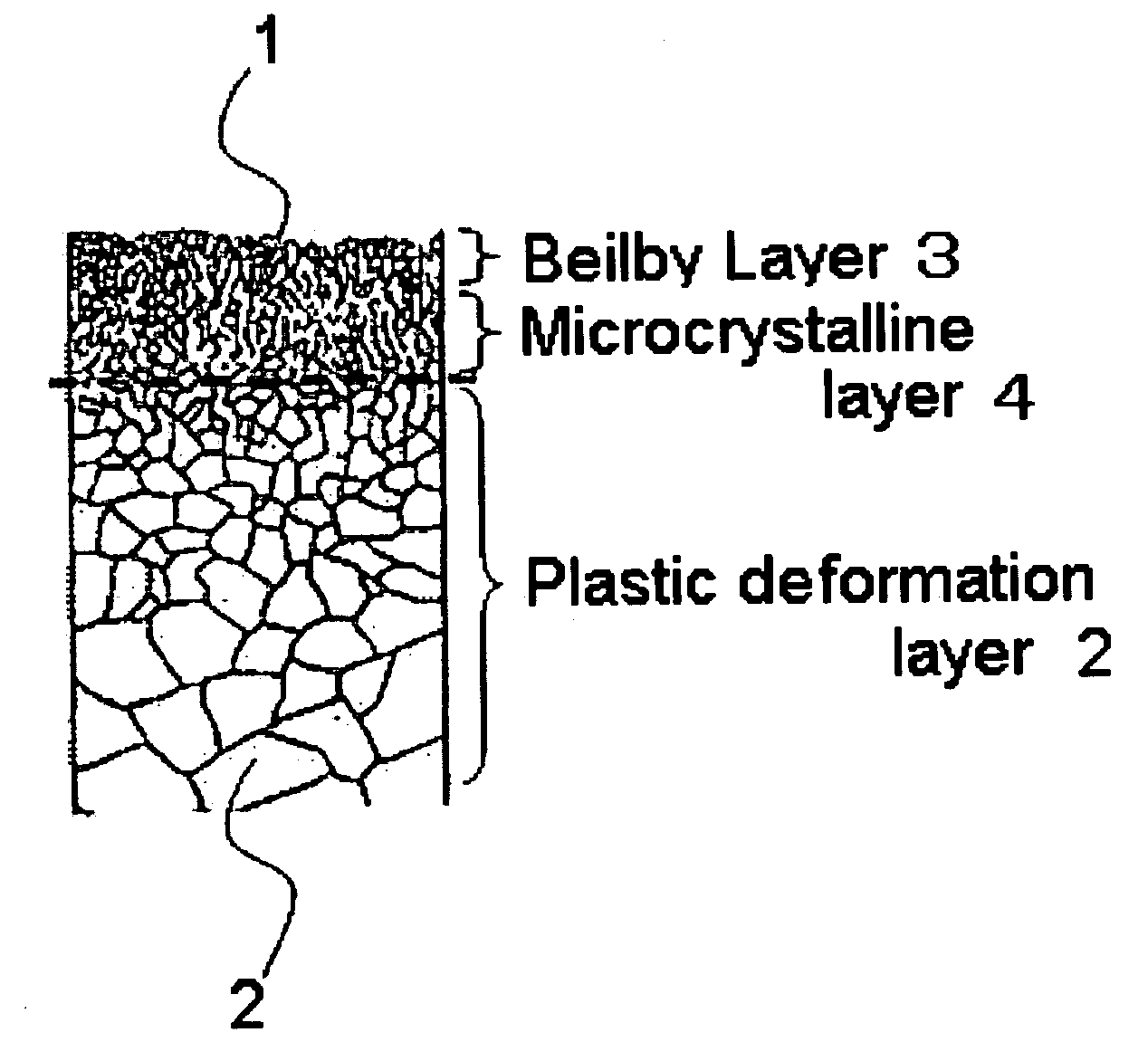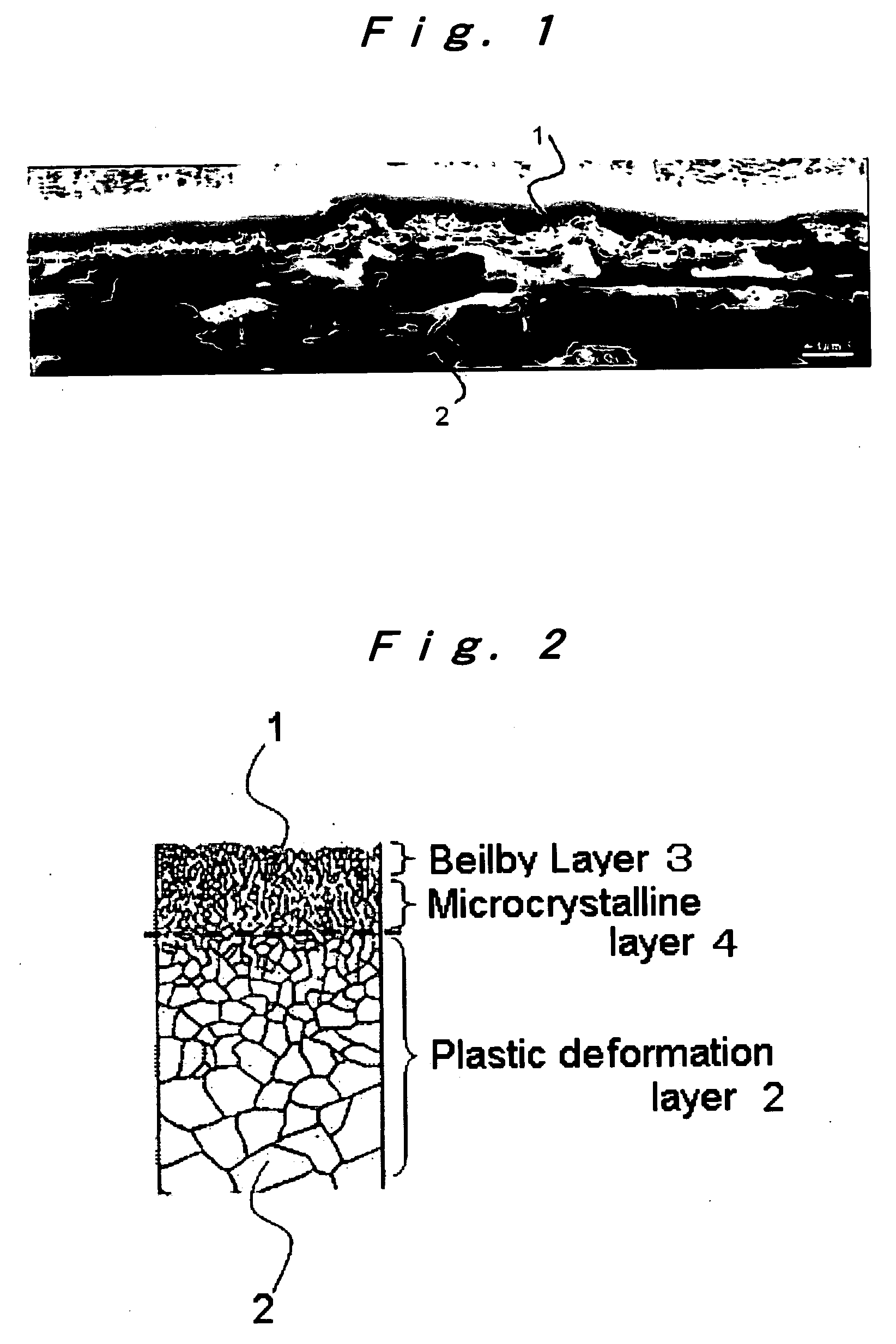Copper alloy for electronic machinery and tools and method of producing the same
a technology of electronic machinery and tools and copper alloy, which is applied in the direction of metal rolling stands, solid-state devices, metal-working apparatus, etc., can solve the problems of bringing about a rise in soldering temperatures at the time, and lowering the bonding strength of wire bonding, so as to achieve excellent plating with metals, reduce the adhesiveness of oxidation film, and not precipitate anomalous metal plating. , the
- Summary
- Abstract
- Description
- Claims
- Application Information
AI Technical Summary
Benefits of technology
Problems solved by technology
Method used
Image
Examples
example 1
[0056] Copper alloys having chemical compositions shown in Table 1 were made into 0.15-mm thick copper alloy sheets by undergoing casting, rolling, buff polishing and annealing in succession. These copper alloy sheets were each given degreasing treatment and pickling treatment, and then subjected to treatment for removal of their respective work affected layers by chemical dissolution. Each of the thus treated materials was coated with Ag plating, and Ag platability was evaluated.
TABLE 1AlloyAlloy composition (mass %)No.CrSnZnNiSiMgFePAgMnCuA0.30.250.2BalanceB3.00.650.15BalanceC0.152.30.03BalanceD0.15BalanceE0.52.50.60.030.1Balance
[0057] The degreasing treatment was performed by cathodic electrolysis for 30 seconds in a degreasing solution, which contained 60 g / l of Cleaner 160S (trade name, produced by Meltex Inc.) and was kept at a temperature of 60° C., under a current density of 2.5 A / d m2. And the pickling treatment was performed at room temperature by immersion for 30 second...
example 2
[0062] Ag plating was performed in the same manner as in Example 1, except that electrolytic dissolution was used as the method of removing the work affected layer of each copper alloy, and the Ag platability was evaluated using the same criteria as in Example 1.
[0063] The removal of the work affected layer of each copper alloy was performed by anodic electrolysis in an aqueous solution containing 700 g / l of phosphoric acid at room temperature under a current density of 10 A / dm2. Herein, five specimens of each copper alloy were prepared for examples of the present invention so that their individual work affected layers after the removal treatment had thicknesses of 0, 0.02, 0.05, 0.1 and 0.2 μm, respectively; while one specimen of each copper alloy was prepared for a comparative example so that its work affected layer after the removal treatment had the thickness of 0.3 μm.
[0064] Evaluation results in Example 2 are shown in Table 3.
TABLE 3AlloyThickness of workEvaluation of AgRe...
example 3
[0065] Ag plating was performed in the same manner as in Example 1, except that heat treatment was used as the method of removing the work affected layer of each copper alloy, and the Ag platability was evaluated using the same criteria as in Example 1.
[0066] The removal of the work affected layer of each copper alloy was performed by heat treatment of 2 hours in a heating furnace with a reducing atmosphere of hydrogen. Herein, five specimens of each copper alloy were prepared for examples of the present invention so that their individual work affected layers after the removal treatment had thicknesses of 0, 0.02, 0.05, 0.1 and 0.2 μm, respectively; while one specimen of each copper alloy was prepared for a comparative example so that its work affected layer after the removal treatment had the thickness of 0.3 μm.
[0067] Additionally, for reducing the thickness of the work affected layer of each copper alloy to 0, 0.02, 0.05, 0.1, 0.2 and 0.3 μm from the original value of 0.4 μm, t...
PUM
| Property | Measurement | Unit |
|---|---|---|
| thickness | aaaaa | aaaaa |
| grain size | aaaaa | aaaaa |
| thickness | aaaaa | aaaaa |
Abstract
Description
Claims
Application Information
 Login to View More
Login to View More - R&D
- Intellectual Property
- Life Sciences
- Materials
- Tech Scout
- Unparalleled Data Quality
- Higher Quality Content
- 60% Fewer Hallucinations
Browse by: Latest US Patents, China's latest patents, Technical Efficacy Thesaurus, Application Domain, Technology Topic, Popular Technical Reports.
© 2025 PatSnap. All rights reserved.Legal|Privacy policy|Modern Slavery Act Transparency Statement|Sitemap|About US| Contact US: help@patsnap.com


